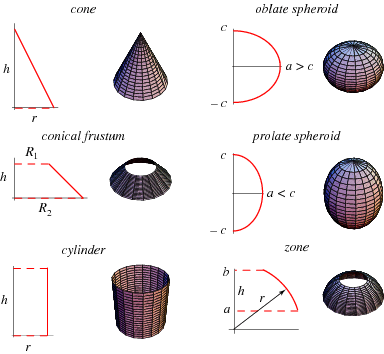Cylindrical Surface of Revolution:
If the line segment & the axis of rotation are coplanar & the line segment is not parallel to the rotation axis, then rotation around the axis through 2π (360o) yields a truncated right circular cone. The radius of the cone at each of end is the perpendicular distance from the ending points of the line segment to the axis of rotation. The cone length is the projected length of the line segment on the rotation axis. An instance is shown in Figures (a) and (b). Closed or open polygons may also be utilized to generate surfaces of revolution. An instance representing a cone with a cylindrical hole in it is illustrated in Figure .
The parametric equation for a point on a surface of revolution is produced by recalling that the parametric equation of the entity to be rotated, for instance
P (u) = [x(u) y(u) z(u)] 0 < u < umax

is a function of the single parameter u. Rotation around an axis causes the position of the point to also be a function of the rotation angle φ. Therefore, a point on a surface of revolution is indicated by two parameters u and φ.